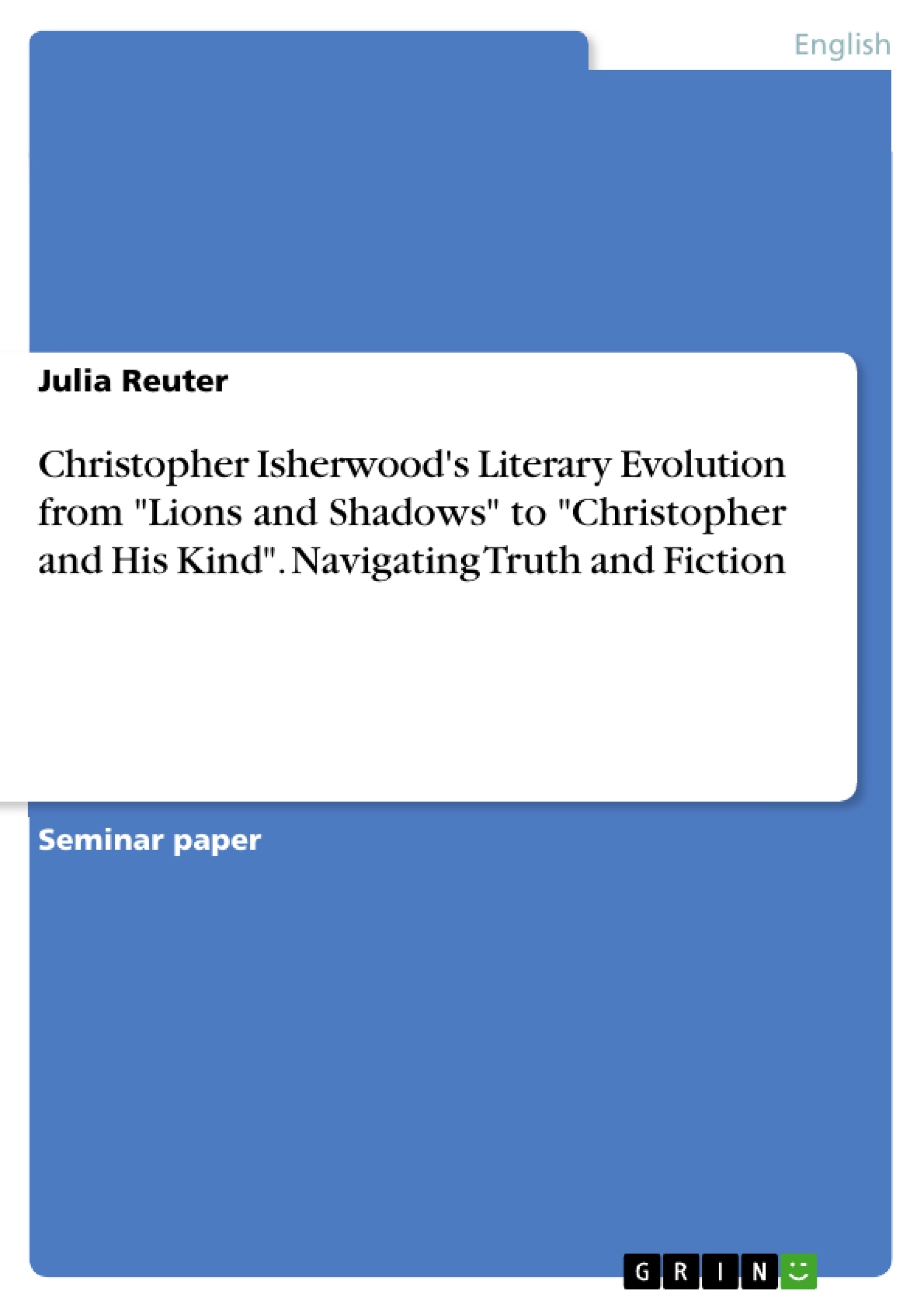Christopher Isherwood, a writer known for skilfully intertwining fact and fiction, left an indelible mark on literature. While his novels often drew upon his life experiences, he also penned autobiographical volumes that have been surprisingly overlooked in isolation. This paper focuses on Isherwood's inaugural autobiography, "Lions and Shadows," published in 1938. Despite the author's foreword urging readers to approach it as a novel, it has predominantly been treated as an autobiographical piece by scholars.
This study seeks to answer the fundamental question: Is "Lions and Shadows" a novel or an autobiography, and what was Isherwood's underlying purpose in crafting it as such? Through a meticulous examination of Isherwood's narrative techniques, thematic choices, and the interplay between fact and fiction, this paper aims to unravel the complexities of this literary work.
Additionally, the paper explores the developmental trajectory from "Lions and Shadows" to one of Isherwood's subsequent autobiographies, "Christopher and His Kind" (1976). By analysing shifts in style, content, and the author's approach to autobiography, the study sheds light on Isherwood's evolving perspective on self-representation and the dynamic relationship between his life and literary creations.
- Quote paper
- Julia Reuter (Author), 2010, Christopher Isherwood's Literary Evolution from "Lions and Shadows" to "Christopher and His Kind". Navigating Truth and Fiction, Munich, GRIN Verlag, https://www.grin.com/document/1416297
-

-

-

-
Upload your own papers! Earn money and win an iPhone X. -

-
Upload your own papers! Earn money and win an iPhone X. -

-
Upload your own papers! Earn money and win an iPhone X. -

-
Upload your own papers! Earn money and win an iPhone X. -

-
Upload your own papers! Earn money and win an iPhone X.

